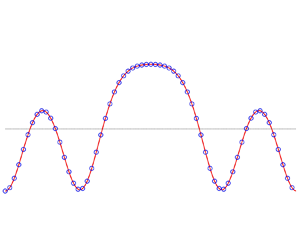Published online by Cambridge University Press: 19 April 2024

Equations relating the pressure at a horizontal seabed, the free-surface profile and the surface pressure are derived for two-dimensional irrotational steady water waves with arbitrary pressure at the free surface. Special cases include gravity, capillary, flexural and wind waves. Without approximations, we show that the free-surface recovery from the bottom pressure requires the resolution of only one first-order ordinary differential equation independent of the surface pressure, thus providing a new general recovery method valid for a broad class of water waves. Another equation provides an explicit expression for the surface pressure as a function of the bottom pressure and of the free surface. Thus, if unknown, the surface pressure can also be recovered if one extra measurement is available. This new recovery procedure is illustrated analytically for the linear approximation of a flexural–capillary–gravity wave, and numerically for fully nonlinear capillary–gravity waves.